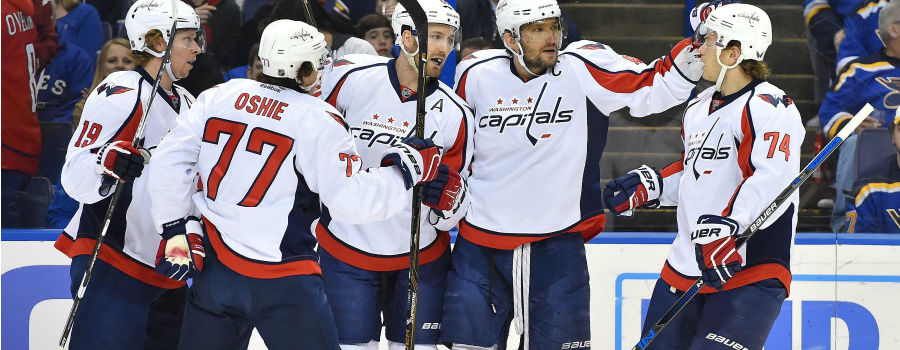When the Vegas line (Moneyline, Spread, or Over/Under) moves in the opposite direction of the betting percentages, that’s reverse line movement. More often than not, this phenomenon is due to sharp (and more overall) money coming in on the less popular side.
What does reverse line movement mean for daily fantasy hockey and for skaters in particular? Let’s find out, using our Trends tool (one of the most valuable tools available to our Pro subscribers).
Baselines and Intro to Reverse Line Movement
To create a baseline trend, let’s apply the following filters:
- Line Filters > Power Play Line > 1 and 2
- Stat Filters > Shot % – Month > 80 to 99
With these filters, we’ve created the typical profile of a skater who would likely be an attractive DFS target.

Moving forward we’ll use a +1.01 FanDuel Plus/Minus as the baseline.
Now let’s think about Vegas line movement.
It makes sense to infer that when a team’s implied total increases (or decreases) that likely is good (or bad) from a fantasy perspective.
However, is this always the case? And are there specific positions that are more (or less) influenced by reverse line movement in NHL contests?
Reverse Line Movement By Position
Centers
Here are the results for centers on teams with improving moneylines and no more than 40 percent of the action:

For centers, being on the right side of reverse line movement has historically provided a large bump in Plus/Minus and Consistency — the largest bump for any position in the -45 to -31 range.
Conversely, centers see the biggest dip of any position when their teams have substantially declining moneylines and at least 60 percent of the action:

Although slightly negative movement (15 to 1) hasn’t historically hurt the position (if anything it’s helped it), the DFS production of centers is notably tied to line movement.
Wingers
Unlike centers, wingers with positive reverse line movement enjoy no substantial improvement in production:

At times, wingers in this positive situation even underperform our basline trend. Why is that? Wingers are typically more volatile and less consistent as a whole (in part because they don’t block as many shots). It’s not totally surprising the only players at the position to outperform the baseline were those whose teams had large favorable movements (-45 to -31).
With negative reverse line movement, the results are actually better:

Wingers in these situations actually outpeformed the baseline outside of the most drastic (45 to 31) range.
Although the general trends that we saw with centers still hold here — the more extreme the line movement is, the better/worse the production becomes — we should remember that in many instances moving away from a favored winger simply due to line movement could be a mistake. In fact, such players could be available at discounted ownership.
Defensemen
Here are the defensemen on teams with positive reverse line movement:

As was the case with wingers, defensemen tend not to be significantly impacted by positive reverse line movement.
Additionally, defensemen are similar to wingers in that they tend to outperform the baseline in negative reverse line movement situations:

These results are drastic, and in fact the more extreme the negative line movement is the better defensemen tend to do. Why might this be the case?
Many defensemen accumulate a significant portion of their points by blocking shots. In a negative reverse line movement situation, it’s likely that the opposing team will control the puck for more of the contest and thus take more shots. As a result, in these situations defensemen will have the opportunity to block more shots.
Although negative reverse line movement might seem to be highly negative from a DFS perspective, it actually isn’t for defensemen. In fact, it has proven to be quite positive.
Instead of fading defensemen in these situations, DFS players should strongly consider rostering them, as they could be available at significant ownership discounts.
Conclusion
As we’ve seen, reverse line movement impacts NHL DFS — and probably not always in ways we would’ve expected.
Centers enjoy the biggest boost in production from positive reverse line movement, but they also experience the biggest decline in production with negative reverse line movement.
Wingers are volatile, but they tend not to benefit much from positive movement or suffer from negative movement.
Like wingers, defensemen see little benefit from positive movement. Additionally, they benefit substantially from negative movement. While many DFS players might fade defensemen in this seemingly negative situation, they should strongly be considered on account of the value and perhaps low ownership they offer.





